Uninstall Nullbyte virus (Free Removal Instructions)
Nullbyte virus Removal Guide
Description of Nullbyte ransomware virus
How does Nullbyte ransomware virus operate?
PokemonGo players can quickly become the target of Nullbyte ransomware virus. Recently, IT researchers found out that the new virus spreads via the fake application called ‘Necrobot.Rebuilt’ that allows users experience more adventures while playing the game. However, the virus can spread using old distribution methods too, so this ransomware is a huge threat to everyone. Ransomware viruses are one of the worst infections that users can catch because they kidnap all the files. After getting inside the computer, Nullbyte virus starts encrypting the files using AES algorithm. After successful encoding, you won’t be able to open the files, changing their names, etc. The virus adds _nullbyte file extension to all your photos, documents, music and other files. What should you do then? Well, hackers want you to believe that you have to pay the ransom. However, IT specialists have already created a free decryption tool. So, you won’t need to sponsor crooks, and you can dedicate your time for Nullbyte removal.
The virus does its dirty job secretly, but once it is done, it will tell you about it. You will receive a message which pops up every time you turn on your PC. In the ransom note, the creators of Nullbyte explain that victims have to pay the ransom in order to get the secret password that is necessary for accessing the files. The ransom is surprisingly small – only 0.1 Bitcoins that equals to a little bit more than 46 GBP. Usually, the payment required for decryption key varies from 1 to 3 Bitcoins. However, the small ransom gives more hope that victims won’t hesitate to pay it. Also, the message screen has a Bitcoin wallet and file decryption functions. So, everything is made for victims’ comfort. But, as we mentioned before, there’s no need to waste your money. If you faced ransomware attack, you should not concentrate on file encryption. First of all, you have to remove Nullbyte, and in this process FortectIntego seems a handy tool. After virus elimination, you can try to recover locked files.

How can I protect my computer from ransomware?
We have already mentioned that Nullbyte virus spreads with ‘Necrobot.Rebuilt.’ However, there are other ways how ransomware gets into users’ computers. The creators of ransomware launch malicious email campaigns. When users click on the infected link provided in the email or download an attached file, the virus gets inside computer’s system. Also, the virus might be hidden in fake software updates or suspicious and exciting advertisements claiming that you won a huge amount of money. If you want to avoid the virus, stay away from these doubtful ads and links.
Moreover, if you want to protect your data, you should regularly make backup copies and store them in external devices. Then, after sudden ransomware attack, you won’t be considering paying the ransom because you will be able to recover all (or at least the majority) of your documents, pictures and other files. Lastly, regularly updating software and using antivirus program can prevent from virus attacks too.
Tips for Nullbyte removal
If your computer was infected with Nullbyte malware, you should not hesitate and get rid of it quickly. The virus makes your computer’s system vulnerable and can allow other malware and viruses get on your PC. The best way to remove Nullbyte is using a professional anti-malware program such as FortectIntego. We are aware that ransomware type viruses can block anti-virus programs; however, it’s possible to re-launch them. So, if you face any problems, look up to our instructions provided bellow. Besides, if you are new at ransomware viruses, you should know that after Nullbyte removal, your encrypted files won’t be unlocked. You will need to use file decryption tool or restore data from backups. But before that, you should be sure that all virus-related files and malicious components are deleted as well. If some malicious files are left, you might face another ransomware attack.
Getting rid of Nullbyte virus. Follow these steps
In-depth guide for the Nullbyte elimination
Important! →
The elimination guide can appear too difficult if you are not tech-savvy. It requires some knowledge of computer processes since it includes system changes that need to be performed correctly. You need to take steps carefully and follow the guide avoiding any issues created due to improper setting changes. Automatic methods might suit you better if you find the guide too difficult.
Step 1. Launch Safe Mode with Networking
Safe Mode environment offers better results of manual virus removal
Windows 7 / Vista / XP
- Go to Start.
- Choose Shutdown, then Restart, and OK.
- When your computer boots, start pressing the F8 button (if that does not work, try F2, F12, Del, etc. – it all depends on your motherboard model) a few times until you see the Advanced Boot Options window.
- Select Safe Mode with Networking from the list.
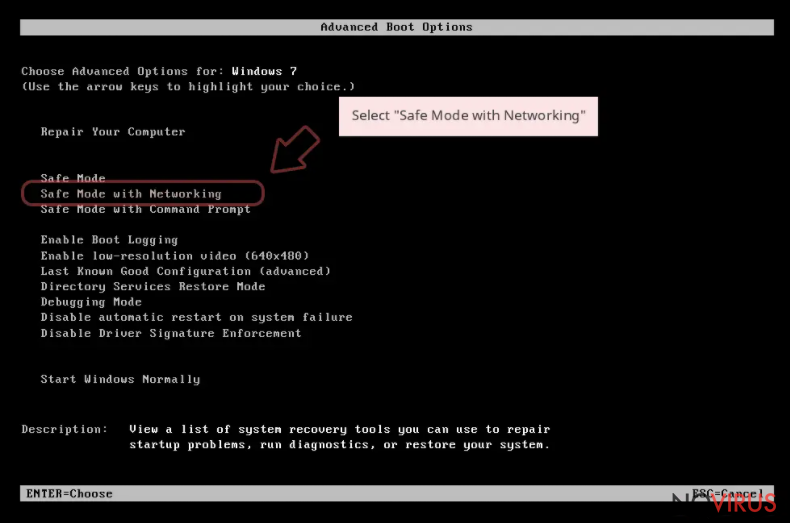
Windows 10 / Windows 8
- Right-click the Start button and choose Settings.
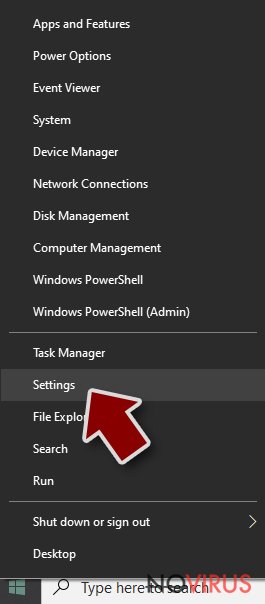
- Scroll down to find Update & Security.
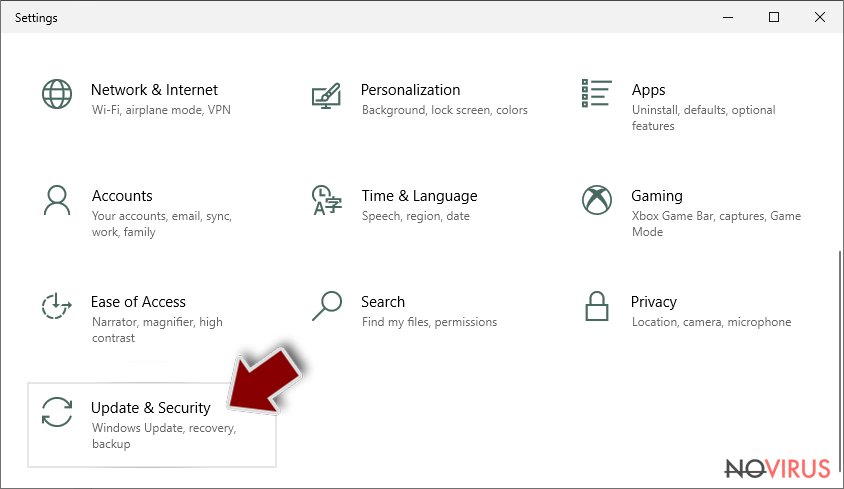
- On the left, pick Recovery.
- Scroll to find Advanced Startup section.
- Click Restart now.
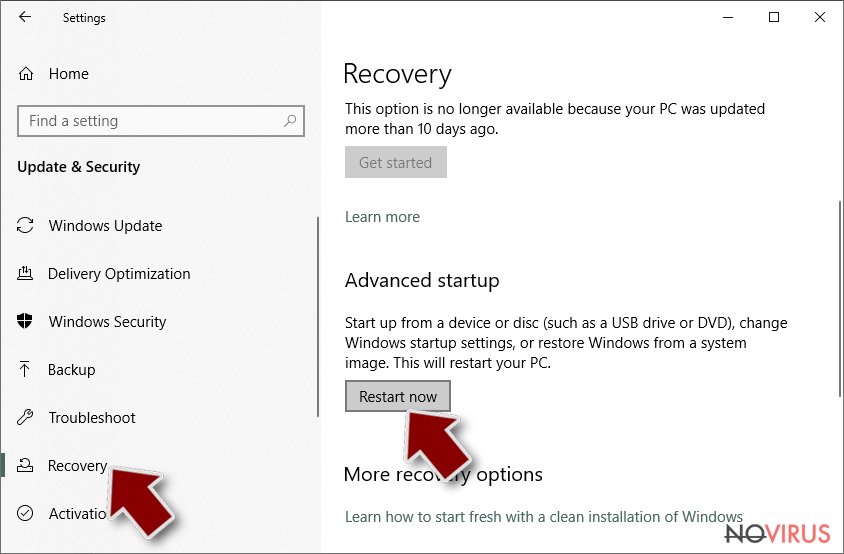
- Choose Troubleshoot.
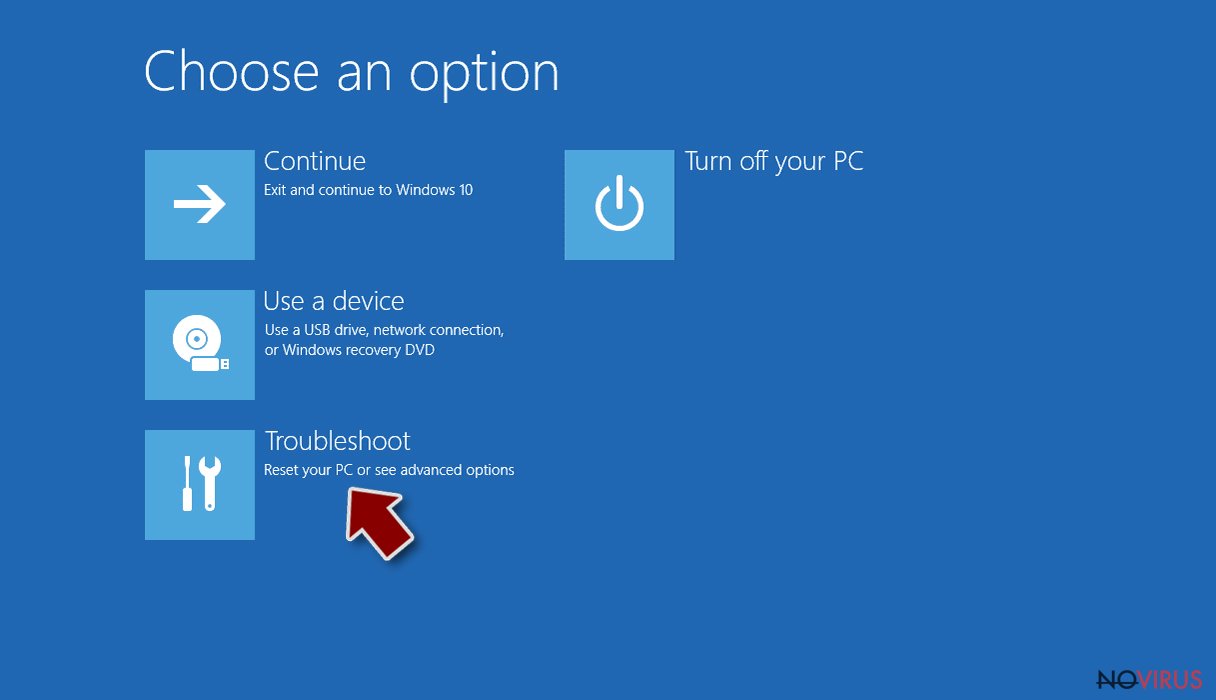
- Go to Advanced options.
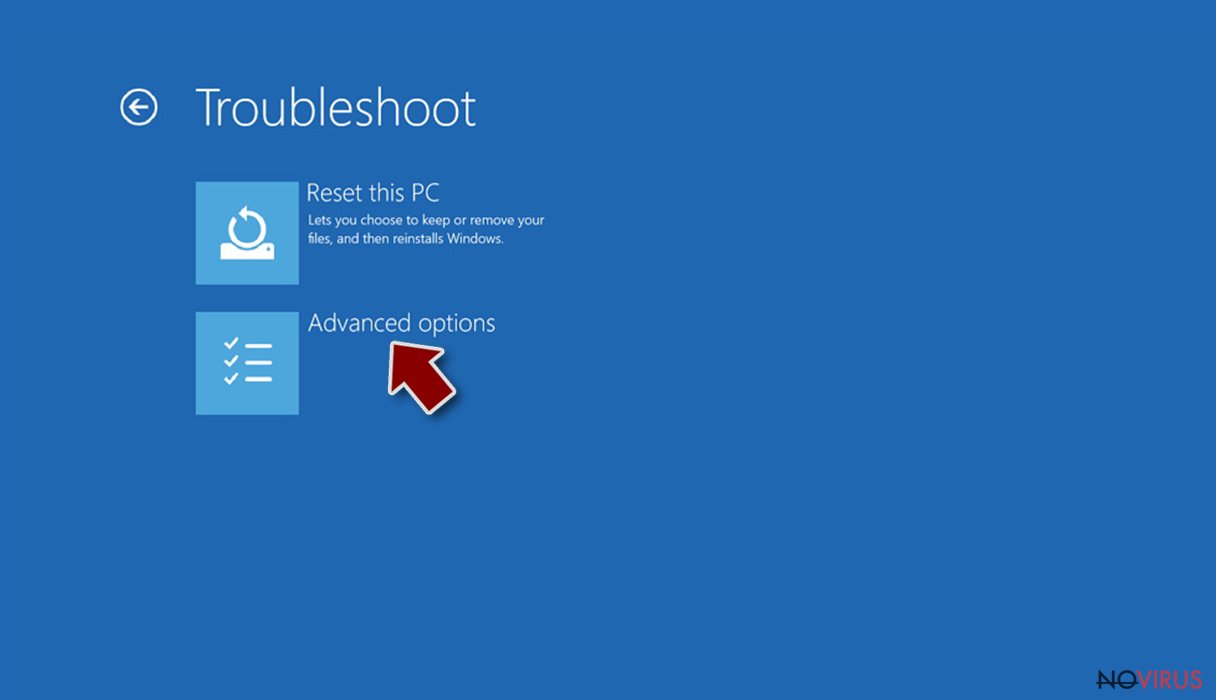
- Select Startup Settings.
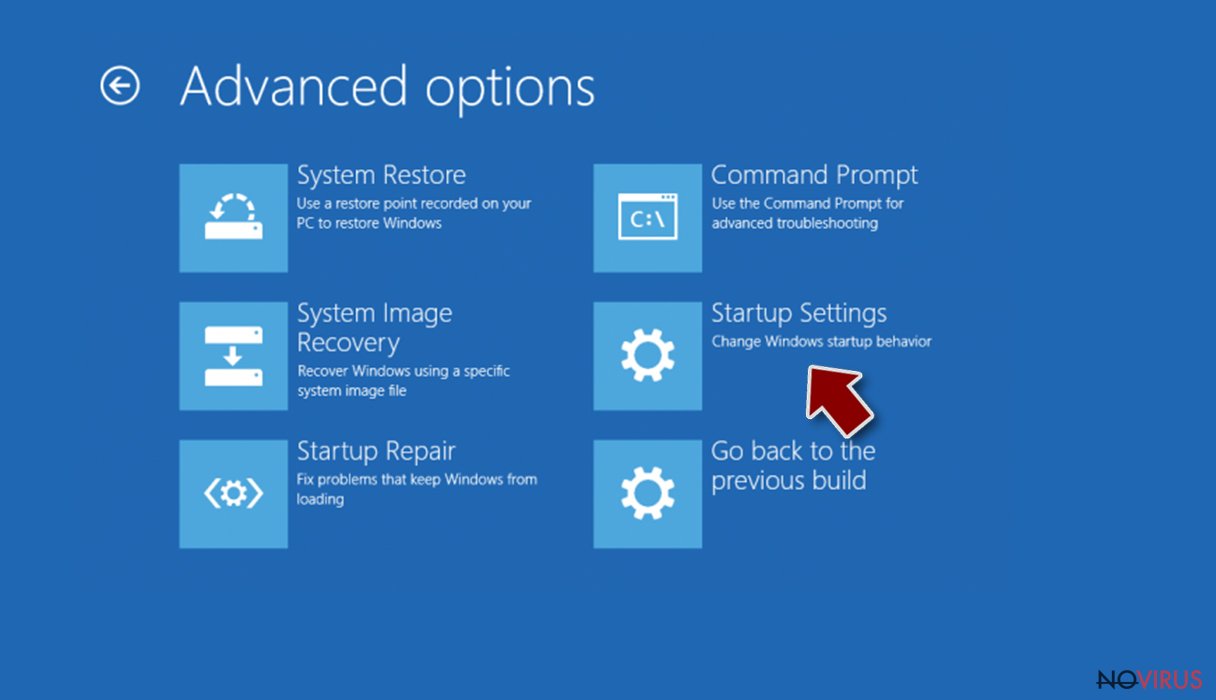
- Press Restart.
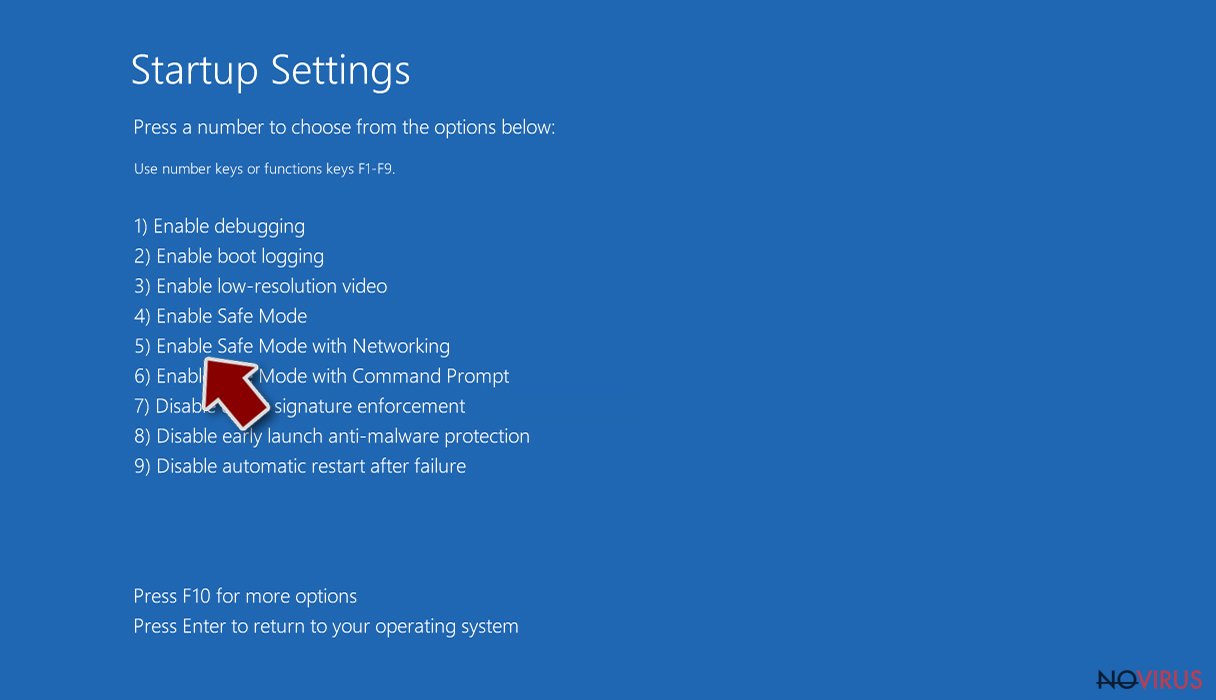
- Choose 5) Enable Safe Mode with Networking.
Step 2. End questionable processes
You can rely on Windows Task Manager that finds all the random processes in the background. When the intruder is triggering any processes, you can shut them down:
- Press Ctrl + Shift + Esc keys to open Windows Task Manager.
- Click on More details.
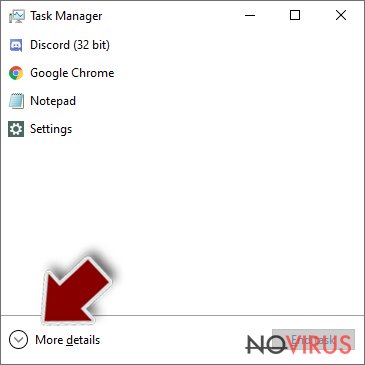
- Scroll down to Background processes.
- Look for anything suspicious.
- Right-click and select Open file location.
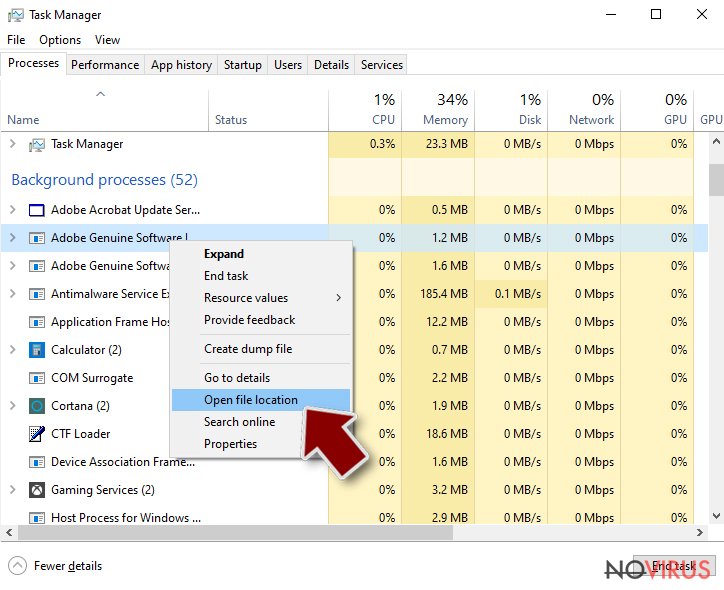
- Go back to the Process tab, right-click and pick End Task.
- Delete the contents of the malicious folder.
Step 3. Check the program in Startup
- Press Ctrl + Shift + Esc on your keyboard again.
- Go to the Startup tab.
- Right-click on the suspicious app and pick Disable.
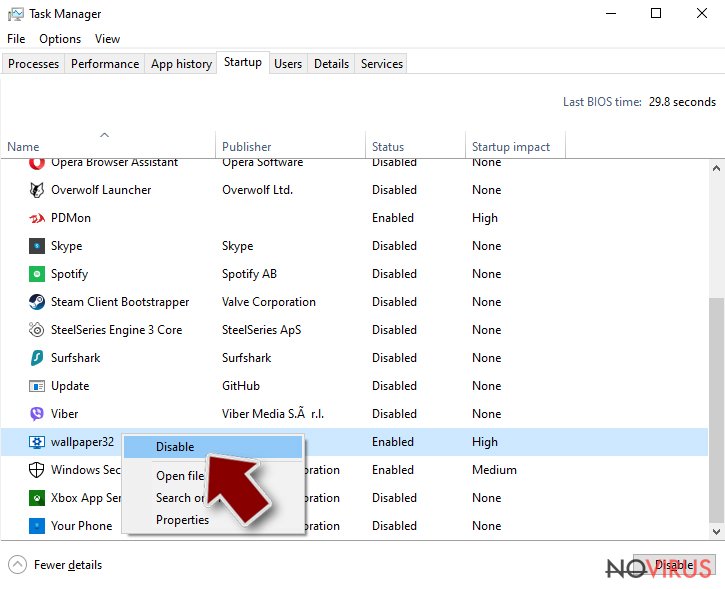
Step 4. Find and eliminate virus files
Data related to the infection can be hidden in various places. Follow the steps and you can find them:
- Type in Disk Cleanup in Windows search and press Enter.
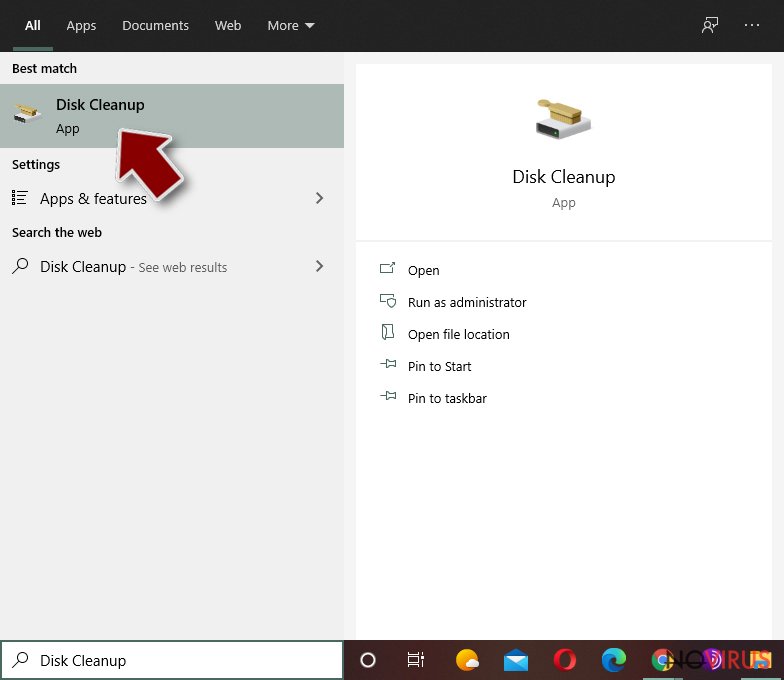
- Select the drive (C: is your main drive by default and is likely to be the one that has malicious files in) you want to clean.
- Scroll through the Files to delete and select the following:
Temporary Internet Files
Downloads
Recycle Bin
Temporary files - Pick Clean up system files.
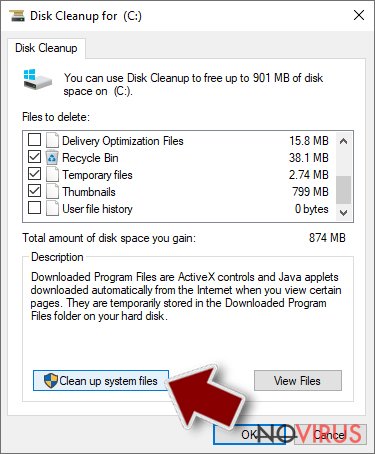
- You can also look for other malicious files hidden in the following folders (type these entries in Windows Search and press Enter):
%AppData%
%LocalAppData%
%ProgramData%
%WinDir%
After you are finished, reboot the PC in normal mode.
Eliminate Nullbyte using System Restore
-
Step 1: Restart your computer in Safe Mode with Command Prompt
Windows 7 / Vista / XP- Go to Start → Shutdown → Restart → OK.
- As soon as your computer starts, start pressing F8 key repeatedly before the Windows logo shows up.
-
Choose Command Prompt from the list

Windows 10 / Windows 8- Click on the Power button at the Windows login screen, and then press and hold Shift key on your keyboard. Then click Restart.
- Then select Troubleshoot → Advanced options → Startup Settings and click Restart.
-
Once your computer starts, select Enable Safe Mode with Command Prompt from the list of options in Startup Settings.

-
Step 2: Perform a system restore to recover files and settings
-
When the Command Prompt window appears, type in cd restore and press Enter.

-
Then type rstrui.exe and hit Enter..

-
In a new window that shows up, click the Next button and choose a restore point that was created before the infiltration of Nullbyte and then click on the Next button again.


-
To start system restore, click Yes.

-
When the Command Prompt window appears, type in cd restore and press Enter.
It is strongly recommended to take precautions and secure your computer from malware attacks. To protect your PC from Nullbyte and other dangerous viruses, you should install and keep a powerful malware removal tool, for instance, FortectIntego, SpyHunter 5Combo Cleaner or Malwarebytes.
How to prevent from getting ransomware
A proper web browser and VPN tool can guarantee better safety
As online spying becomes an increasing problem, people are becoming more interested in how to protect their privacy. One way to increase your online security is to choose the most secure and private web browser. But if you want complete anonymity and security when surfing the web, you need Private Internet Access VPN service. This tool successfully reroutes traffic across different servers, so your IP address and location remain protected. It is also important that this tool is based on a strict no-log policy, so no data is collected and cannot be leaked or made available to first or third parties. If you want to feel safe on the internet, a combination of a secure web browser and a Private Internet Access VPN will help you.
Recover files damaged by a dangerous malware attack
Despite the fact that there are various circumstances that can cause data to be lost on a system, including accidental deletion, the most common reason people lose photos, documents, videos, and other important data is the infection of malware.
Some malicious programs can delete files and prevent the software from running smoothly. However, there is a greater threat from the dangerous viruses that can encrypt documents, system files, and images. Ransomware-type viruses focus on encrypting data and restricting users’ access to files, so you can permanently lose personal data when you download such a virus to your computer.
The ability to unlock encrypted files is very limited, but some programs have a data recovery feature. In some cases, the Data Recovery Pro program can help recover at least some of the data that has been locked by a virus or other cyber infection.







